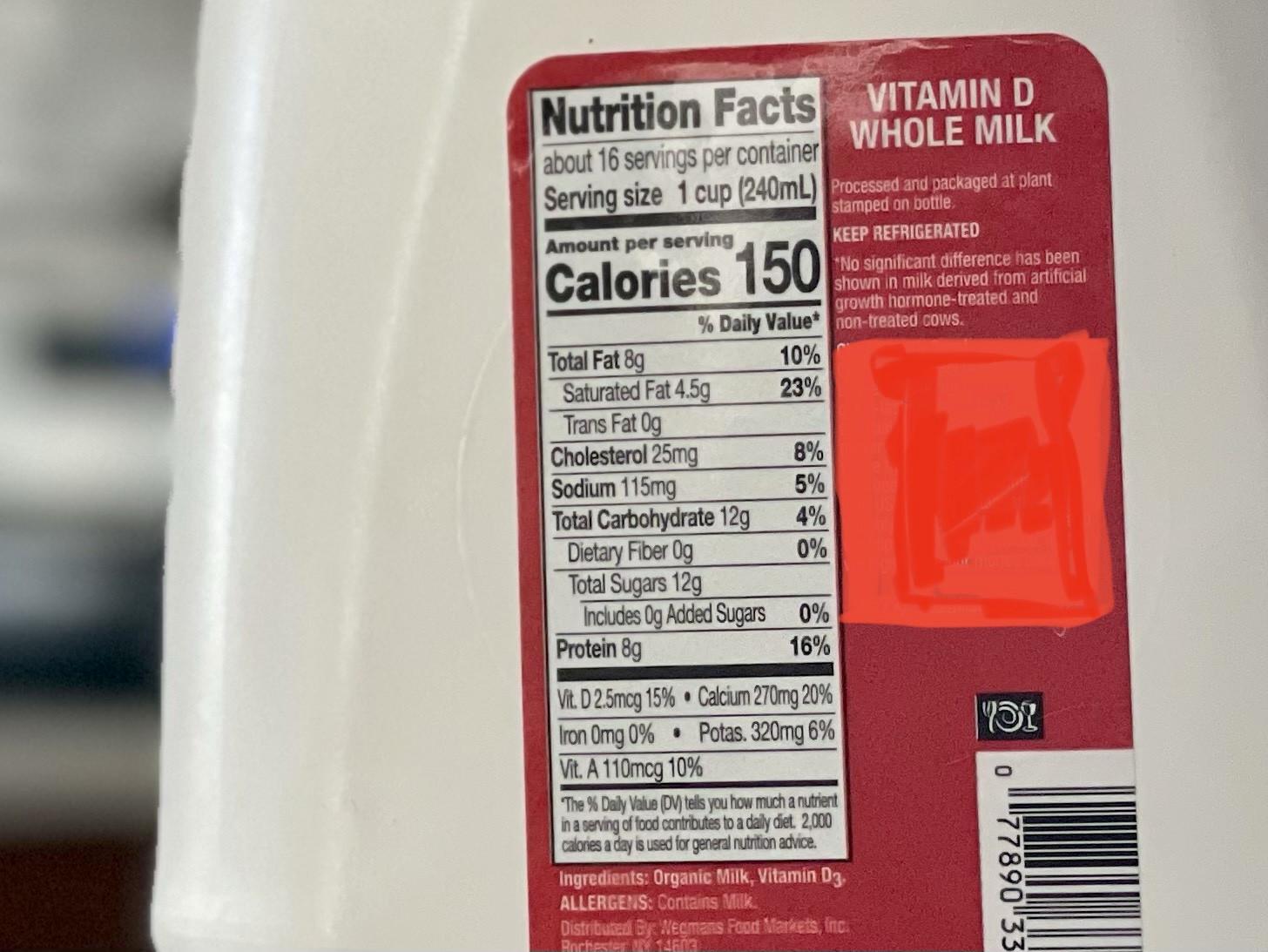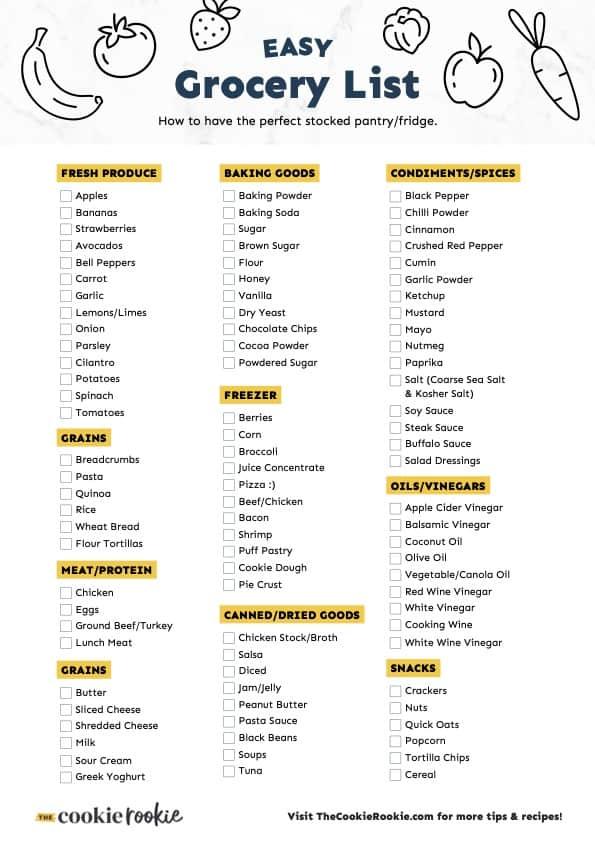In a world where food choices are abundant yet overwhelming, grocery shopping can often feel like navigating a complex maze. The way we choose our groceries not only impacts our health but also affects our budget and overall well-being. With an increasing awareness of nutrition and sustainability, making informed decisions at the grocery store has become more crucial than ever. This article delves into essential tips for smart and healthy grocery shopping, providing you with practical strategies to enhance your shopping habits. From understanding food labels to planning balanced meals, our guide will empower you to navigate the aisles with confidence and purpose, ensuring that each trip to the store is a step toward a healthier lifestyle. Join us as we explore how to shop wisely, save money, and nourish your body and mind through the power of nutritious food choices.
Table of Contents
- Understanding Nutrition Labels for Informed Choices
- Planning Ahead: The Importance of a Grocery List
- Selecting Produce: How to Choose Fresh and Healthy Options
- Mindful Shopping: Strategies to Avoid Impulse Purchases
- Future Outlook
Understanding Nutrition Labels for Informed Choices

Deciphering nutrition labels is essential for making informed food choices that align with your health goals. Start by focusing on the serving size, as all other nutritional information is based on this measurement. Pay attention to the calories per serving, especially if you’re monitoring your intake for weight management. Equally important is the % Daily Value (%DV), which helps you gauge how much a nutrient in a serving contributes to your overall daily diet. Aim for lower values in saturated fat, sodium, and added sugars, while looking for higher percentages in fiber, vitamins, and minerals to enhance your nutrient intake.
When evaluating the ingredients list, remember that ingredients are listed in descending order by weight. This means that the first few ingredients comprise the majority of the product. Look for items with whole foods listed at the top, such as fruits, vegetables, and whole grains, and avoid those with long lists of unrecognizable additives and preservatives. Familiarize yourself with common nutrition claims like “fat-free,” “low-sodium,” or “organic,” but don’t be swayed solely by these terms. Always compare similar products to make healthier choices, as one seemingly healthier option can still have hidden sugars or unhealthy fats.
Planning Ahead: The Importance of a Grocery List

Creating a grocery list is more than just a shopping technique; it is a crucial step in maintaining a healthy lifestyle and smart budgeting. The act of planning your meals and writing down the ingredients ensures that you only purchase what you need, drastically reducing impulse buys and food waste. Whether you are shopping for just yourself or for a family, having a list helps you stay focused and organized, allowing you to navigate the store efficiently. This practice not only saves time but also promotes healthier choices, steering you away from the aisles filled with processed foods.
When crafting your grocery list, consider categorizing items to streamline your shopping experience. Here are a few categories that can help you stay on track:
- Fruits and Vegetables: Fresh produce should always top your list.
- Proteins: Include lean meats, dairy, or plant-based alternatives.
- Whole Grains: Opt for whole grain breads, pasta, and rice.
- Snacks: Look for healthier snack options to keep cravings at bay.
- Condiments and Extras: Don’t forget seasonings and healthy fats.
By following this structured approach, you will not only bring home essentials but also engage in mindful eating. Utilizing a grocery list minimizes the likelihood of last-minute unhealthy selections and encourages you to experiment with fresh ingredients.
Selecting Produce: How to Choose Fresh and Healthy Options
When grocery shopping, selecting fresh produce is crucial for maintaining a nutritious diet. Look for items that are vibrant in color and free from blemishes or bruises. A few key tips for choosing healthy options include:
- Inspect the Skin: The skin of fruits and vegetables should be firm and free of any discoloration.
- Aroma Matters: Fresh produce often emits a pleasant, sweet smell. If something smells off, it’s likely not fresh.
- Seasonal Choices: Opt for seasonal fruits and vegetables, as they are typically harvested at their peak freshness.
Another important aspect is to consider the origin and farming practices of the produce. Local farmers’ markets can be a great source of fresh options and allow you to ask about growing methods. Be aware of the following:
| Produce Type | Best Season | Health Benefits |
|---|---|---|
| Tomatoes | Summer | Rich in antioxidants such as lycopene. |
| Spinach | Spring | High in iron and essential vitamins. |
| Apples | Fall | Great source of fiber and Vitamin C. |
By keeping these pointers in mind, you can make informed decisions that enhance both your health and your culinary experience. Prioritizing fresh, seasonal produce ensures that you’re not only eating well but also supporting sustainable practices within your community.
Mindful Shopping: Strategies to Avoid Impulse Purchases
To cultivate a mindful shopping experience, begin by establishing a shopping list before you leave home. This not only serves as a guide but also minimizes the likelihood of distractions from captivating displays or end-cap promotions. A well-prepared list helps in maintaining focus on your specific needs, ensuring you purchase only what is necessary. Consider organizing your list by section of the store to streamline your shopping process. Other effective strategies include:
- Implementing a 24-Hour Rule: If you find an item that tempts you, wait a day before purchasing. This cooling-off period often leads to realizing that the item may not be as essential as you initially thought.
- Setting a Budget: Determine a spending limit for each shopping trip and stick to it strictly. This fosters deliberate choices rather than spontaneous ones.
- Avoiding Shopping When Hungry: Shopping on an empty stomach can heighten cravings for unnecessary snacks or convenience items. Ensure to eat a healthy meal or snack beforehand.
Another powerful approach involves practicing mindfulness while navigating the aisles. Pay attention to your thoughts and feelings during the shopping process, which can unveil underlying emotions or motivations leading to impulsive buys. Additionally, setting up a weekly grocery plan can transform your shopping habits into a more calculated endeavor. Here’s a simple table to illustrate how to structure your grocery planning effectively:
| Day | Meal Type | Key Ingredients |
|---|---|---|
| Monday | Dinner | Chicken, Broccoli, Quinoa |
| Tuesday | Lunch | Leafy Greens, Avocado, Tuna |
| Wednesday | Snack | Greek Yogurt, Berries |
By planning your meals in advance, not only will you make more intentional purchases, but you’ll also enhance the healthiness of your meals while reducing food waste, contributing to a smarter, healthier grocery shopping experience.
Future Outlook
As we wrap up our journey into the world of smart and healthy grocery shopping, it’s evident that the choices we make in the aisles can have a profound impact on not only our health but also our overall well-being. By prioritizing whole foods, reading labels diligently, and planning meals in advance, we empower ourselves to build a diet that nourishes both body and mind. Remember, the path to a healthier lifestyle begins with conscious choices—every ingredient you select plays a vital role.
So next time you head to the grocery store, approach it with a strategic mindset. Embrace the tips highlighted in this article, and let them guide your selections. Transform your shopping trips into an opportunity to invest in your health and happiness. With every cart filled with nutritious options, you’re not just stocking your pantry—you’re paving the way for a brighter, healthier future. Happy shopping!



